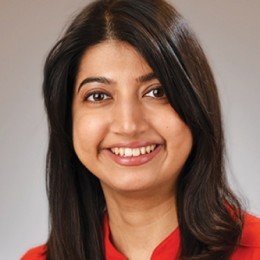(2).jpg) DARIEN, Illinois – Sleep medicine experts were skeptical of the potential of artificial intelligence just four or five years ago, but as they learn more about the technology, they are beginning to see its potential, says Dr. Anuja Bandyopadhyay.
DARIEN, Illinois – Sleep medicine experts were skeptical of the potential of artificial intelligence just four or five years ago, but as they learn more about the technology, they are beginning to see its potential, says Dr. Anuja Bandyopadhyay.
“Once you start to see beyond the black box and people start to realize, ‘This is beneficial, this is going to save us time, this is going to save us resources, this is going to improve access to care,’ it becomes a natural solution to a lot of our problems,” said Bandyopadhyay, chair of the American Academy of Sleep Medicine’s committee on artificial intelligence in sleep medicine and an assistant professor of pediatrics at Indiana University.
Bandyopadhyay is also lead author of a new research paper on the use of AI technology in sleep medicine.
HME News: Is sleep medicine a good fit for AI technology?
Dr. Anuja Bandopadhyay: I think in sleep medicine we are in the best position because we have access to a variety of body signals and can see everything on one page, including brainwaves and oxygen levels. Sleep is something we do naturally, but it is also closely linked to mental health and cardiovascular health and is very easily affected by external inputs, environment and habits. There is a large field of science that studies the psychosocial aspects of sleep and how to change behavior. There is a lot of hidden treasure hidden in all these data points.
HME: What are some examples of problems in sleep medicine that AI technology can solve?
Bandyopadhyay: I think the three main areas of healthcare are clinical care, lifestyle management, and population health. If you think about lifestyle management (for example), more and more people are now aware of their sleep habits thanks to sleep trackers. Knowing not just how long you slept, but what happened right before that gives you clear patterns. Patients are now empowered because they have access to all that data themselves.
HME: How does AI help with patient compliance?
Bandyopadhyay: Compliance is a big issue. Over the last decade, a number of patient engagement tools have emerged to help. Research has shown that simply looking at PAP usage history can predict which patients will stop using it in the next week or so. With technology that allows you to handpick the patients who really need it, you can get them seen right away.
HME: The Food and Drug Administration recently approved the use of the Samsung Galaxy Watch to detect signs of obstructive sleep apnea. Where do you see wearables fitting into the bigger picture?
Bandyopadhyay: There are always differences between consumer-grade devices and clinical-grade devices, but for consumer-grade devices, this is a great screening tool because it can pick up subtle differences or changes or non-specific abnormalities, so it alerts you that there might be something wrong.

